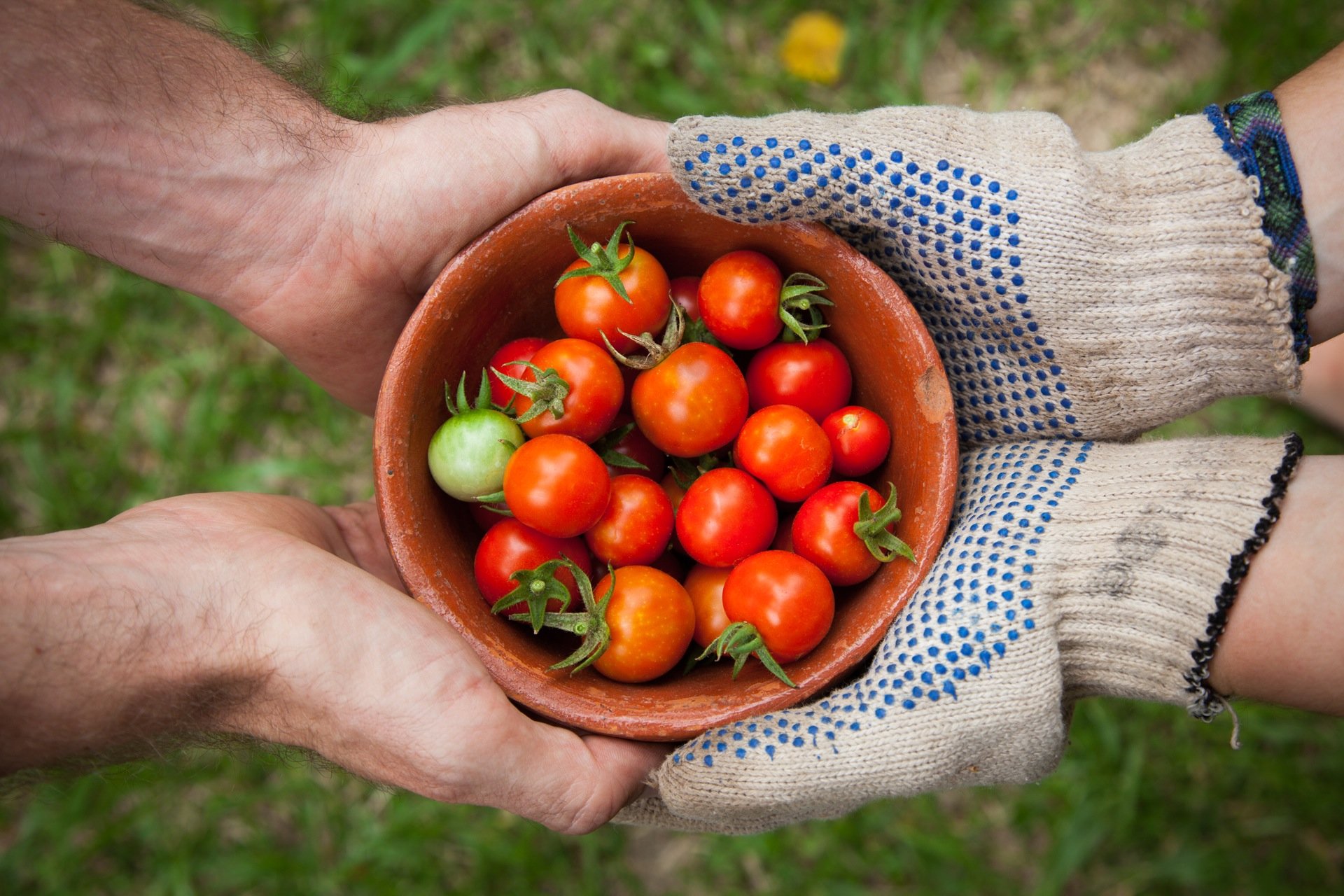Making organic food more affordable
There are ways to make organic food more affordable so you can buy more of it. Buying in bulk or direct from suppliers, buying what’s local and in season, buying ingredients rather than processed foods: all these will cut your food bill. So will growing some of your own food and swapping excess within your community.
We hope you enjoy this free article from OrganicNZ. Join us for access to exclusive members-only content.
Organic co-operatives
Food co-operatives are groups of people who buy food in bulk at wholesale prices or direct from the producer.
Each month the co-op co-ordinator sends out a master order form that members use to place their order. The co-ordinator collates this together and places an order with the supplier via email or an online system. The co-ordinator then invoices members for their goods, adding freight, GST and sometimes a handling fee. Goods are delivered to a single location. There are different ways to organise dividing products up for collection by individual members.
Most food co-ops are supplied by organic wholesalers Ceres Organics and Chantal Organics. Product catalogues are available in digital form with hundreds of products on offer. Each catalogue is separated into two main categories; retail pack downs and bulk goods. Retail pack downs are small items boxed together in an outer or carton. For example, co-op members might divide an outer of 12 cans of coconut cream between themselves, or order a whole carton each. The catch is, your co-op can only buy a full outer.
Bulk items are large quantities of dry goods like grains, legumes, beans, nuts, and oil; think 10 or 25 kilo sack. Chantal also supplies bulk quantities of organic butter and cheese.
Going big
Tash Robertson set up the Kapiti Coast Co-op eight years ago with a few friends. Now it has 150 members and Tash’s partner Nico Borren co-ordinates each order. It ran out of the couple’s lounge for a year until Nico sacrificed their garage. “Having space to receive and sort the orders is necessary for a co-op this size,” he says. An IT expert was also called in to create a custom online spreadsheet that streamlined ordering and tracking payments.
Co-op members pack their own orders and are encouraged to bring their own containers. This helps to reduce the workload and keeps costs down. People are also rostered on to help manage the stock and assist other members as they collect their orders. This keeps the shed running smoothly.
A second co-op formed in 2009 to buy fresh food. It’s also based out of Nico and Tash’s house but is run by an incorporated society. Some people are members of both.
“We’re not taking customers away from organic retailers,” says Nico. “Most co-op members couldn’t afford to buy organic at retail prices. Others choose to be involved with the co-op because they want to be part of a community venture.”
Small scale
Bec Erickson runs a small co-op along with two other Gisborne mums. “While there are savings to be made in large co-ops, they take energy to co-ordinate. Keeping them small means less work. We take turns organising each order but if someone [is too busy], another person will step in.”
“Gisborne has a few co-ops and we all know each other. We often call on other co-ops to make up the shortfall on large items if we cannot buy it alone,” says Bec. This works well for butter and cheese in particular.
Eight years ago, Natacha Lee was looking to access organic food at a good price. Other local co-ops were not taking on new members so she set one up herself, rallying other like-minded people. She created a spreadsheet on Google docs, using a sample provided by a friend who had run several co-ops. “Co-ops are easy to set up if you have help from someone who has done it before,” Natacha says.
East Coast Organics has 28 members on its mailing list with an average of 10 people ordering every six to eight weeks from Ceres. After volunteering for years, Natacha suggested a $5 fee per member per order, which was happily agreed to.
“There are some limitations to this type of co-op,” Natacha explains. “It’s not beneficial for those who only wish to buy a few things, or those on a tight budget. Ideally you’d spend at least $200 each order as members that buy only a few products can get stung by the freight, handling and bank fees.” (This co-op divides freight costs equally between the members; other co-ops divide it according to the value or weight of each member’s order.)
You also need suitable containers and storage space for bulk purchases once you get them home. A chest freezer is useful for keeping meat and dairy but also for wholegrain flours, which can quickly go stale.
Other options
There are several other options for sourcing organic goods if co-ops don’t suit or aren’t available.
There are currently 30 official farmers markets the length of New Zealand and many more local markets that also sell food. Look for certified organic produce or if that’s not available, ask stallholders if they are growing the food they sell and about their growing practices.
For locations, visit www.farmersmarkets.org.nz.

Community Supported Agriculture
(CSA) schemes share the risks and benefits of food production between producers and consumers. Members pay an annual fee to cover farm costs in exchange for a weekly supply of fruit and vegetables. Depending on the farm, it may also include eggs, dairy and meat. There are currently only two CSAs in New Zealand, Wairarapa Eco Farm and Puramahoi Fields in Golden Bay.
Brown Owl is an innovative development in Rotorua, a not-for-profit organic food club that provides weekly access to fresh and dry goods:
Online shopping
The Internet is a great source for affordable organic food. Businesses deliver fresh fruit and vegetable boxes around the country and most offer extras like fresh bread and pantry items. Ooooby boxes are available in Auckland, Tauranga, Christchurch, Taranaki and Waikato; Harvest To Home and Naturally Organic deliver to the Auckland area; Mount Wholefoods delivers throughout the North Island; Fresh to U covers the top of the South Island; and Just Organic delivers nationwide.
Wholegrain Organics is a non-profit organisation based in Feilding that supplies fresh organic produce, whole grains, flours and pantry goods. NZ Biograins sell similar lines.
Bulk grains, flours, and legumes can be ordered directly from certified organic mixed family farms in Canterbury. Look up Terrace Farms (email terracefarmorganic@ gmail.com for a catalogue) and Milmore Downs (www.milmoredowns.co.nz).
Online trading
Alternative currency schemes operating in local communities can also be a source of locally grown, healthy produce. There are several active examples around New Zealand, such as H.A.N.D.S in Golden Bay and EAST in Gisborne.
Gizzy Fruit and Veg, Warkworth Green Co-op and Realfood BOP are among dozens of Facebook groups trading, selling and gifting fresh produce in their local area.
Ripe Near Me is a website that connects growers and consumers: www.ripenear.me.
Produce traded in such ways is very unlikely to be certified organic but because you are dealing directly with the grower, you can ask questions about their practices.
Do you have suggestions or comments about co-ops or other ways of saving money on your food bill? Please join in the conversation on the Organic NZ magazine Facebook page, or write a letter to the editor.
Saving money on your food bill
With some planning, you can stick to your budget and eat organic food on a regular basis. Instead of spending hundreds at the supermarket each week, we cut out the excessive packaging and processed foods in favour of buying bulk, making our own and shopping online and at our local farmers market.
We spend half an hour each pay day planning meals for the next week. This has transformed our budget and makes mealtimes less stressful. As we plan, we write a list for the farmers market and another for the supermarket. We spend most of our money on fresh vegetables, fruit, eggs and meat from organic producers at the market. We buy very little from the supermarket, with most of our dry goods ordered through our co-op. We set aside money each week for the co-op order.
Growing our own food also cuts our food bill. Start simple with a salad garden, and move on to main crops like garlic and onions. It all adds up.
Do you have suggestions or comments about co-ops or other ways of saving money on your food bill? Please join in the conversation on our Facebook page, or write a letter to the editor.
We have a formula that works
Robyn Guyton says the Riverton Organic Food Co-op has the cheapest organic food in New Zealand. She was one of three young mothers who started the co-op, in the small, rural centre of 1200 people at the tip of the South Island. Now those babies have grown up and come to the co-op to shop too, with their own children in tow.
Co-op members have access to fresh produce, eggs, dry goods, meat and dairy. The co-op turns over $300K a year.
It started out as a classic co-op, with a typical problem: some people volunteered all the time, other people were always too busy to help. So now, some co-op members volunteer at a range of different tasks and every hour a person works each month is worth a two per cent discount off their food. Those people who are short on time usually have more money and are happy to pay the non-discounted price.
The food co-op is set up in a corner of the South Coast Environment Centre. The Centre pays the rent on the building and the food co-op volunteers mean that the Centre is open for 42 hours a week, substantially more than it would otherwise. It’s a win-win situation.
“The co-op’s organic philosophy is ethical rather than bureaucratic,” explains Robyn. They are committed to supporting local producers, which includes some BioGro and OFNZ-certified growers as well as passionate locals whose food is organic but not certified. The co-op sources further afield as necessary, from Christchurch, Nelson and also from Ceres.
“We rock,” says Robyn, with a smile. “If we can do this in Riverton, it can be done anywhere. We have a formula that will work in other small towns, but also in city suburbs.”
Set up your own co-op: Ten helpful steps
Established co-ops often don’t accept new members, or have a waiting list, because the group has found the optimum number of members for the way they operate. If you don’t want to wait for a spot, gather some like-minded people and set up your own co-op. Here’s what you need to know:
- Understand suppliers terms. Find out how often you are required to order, what minimum orders may apply, delivery costs and any other terms.
- Decide how the co-operative will run. Will one person co-ordinate every order and will they volunteer or be paid by co-op members? How will produce be shared out: will members be rostered to do this in turn, pack their own or will someone volunteer or be recompensed for doing this?
- How will you share the cost of freight: split between individual members or apportioned according to the value or weight of each member’s order?
- Must members pay in full before their order is accepted or will the co-ordinator be reimbursed once the order arrives? Be cautious about the latter set up. It can work, but is better suited to a small co-op between good friends or family members.
- Name your co-op. This is required for an account with suppliers and by the bank.
- Set up an email address and bank account. Having a separate bank account makes it easier to track payments. This type of co-op is not usually a legal entity, so your bank account will have to be in a co-op member’s name, trading as the co-op. Consider having more than one signatory to the account.
- Find a space. Think ahead: your delivery address needs to be easily accessible by a large vehicle and someone needs to be there during the delivery day to sign for the order. You need a weather-proof space big enough to divide, weigh and distribute the products into individual member’s orders. If you’re sharing out bulk purchases, you’ll need large, reliable scales that can weigh at least up to five and preferably 10 kilos, plus bags or other containers and marker pens.
- Set up a business account with wholesalers. Nominate a delivery address.
- Create a master order form using a spreadsheet. Check whether an existing co-op will share a template of their order form; you could compare several to get ideas. Google docs is a common choice, or any other spreadsheet program that is accessible to all co-op members and easy to use. Share the file online so everyone can access it. Using formulas to total quantities and prices saves time but make sure everyone accessing the spreadsheet knows how to use it (or at least, what not to change).
- Input products on your spreadsheet using the product description, unit size, quantity, unit trade price and case trade price for each item from the catalogue. You do not need to input or copy the whole catalogue! Keep your list simple and start with essential items you will buy every time.
Bridget Scully is a mother and a writer. She lives in Gisborne with her family and hosts a facebook group called Nurture Earth.




